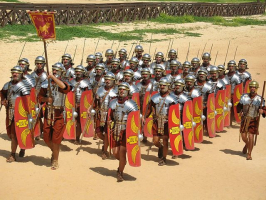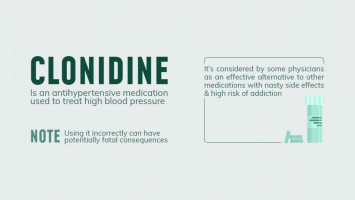Top 8 Things to Know about Storming of the Bastille and Bastille Day
Bastille Day is a national holiday in France observed on July 14. Military parades, fireworks displays, musical performances, and even parties are held at ... read more...firehouses! The colors blue, white, and red are everywhere in the nation in remembrance of France's national day. Toplist has put together a guide to Bastille Day with some suggestions on how to celebrate the occasion! Here are things you should know about the storming of the Bastille and Bastille day.
-
The Bastille was constructed in the 1300s during the Hundred Years' War against the English to guard the eastern entrance to Paris. A wide moat and 100-foot-high walls, as well as more than 80 regular soldiers and 30 Swiss mercenaries, were among the formidable stone building's formidable defenses.
As a prison, it housed political dissidents (including the writer and philosopher Voltaire), many of whom were imprisoned without trial by the king's order. However, by 1789, it was scheduled to be demolished and replaced by a public square. Furthermore, there were only seven prisoners: four accused of forgery, two considered "lunatics," and one held at the request of his own family.
The notorious Marquis de Sade, who is the source of the word "sadist," had also been detained there. But earlier that summer, he was fired for falsely yelling out the window that the prisoners inside were being massacred.
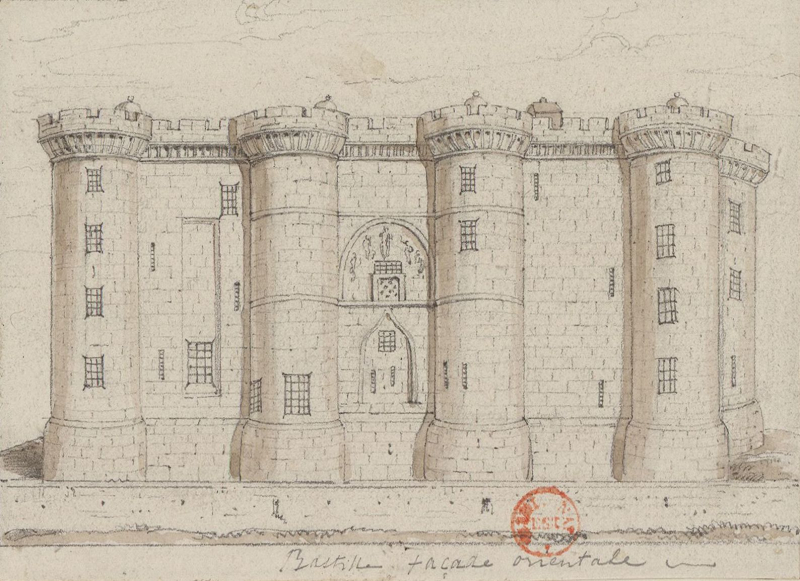
Bastille - Wikipedia 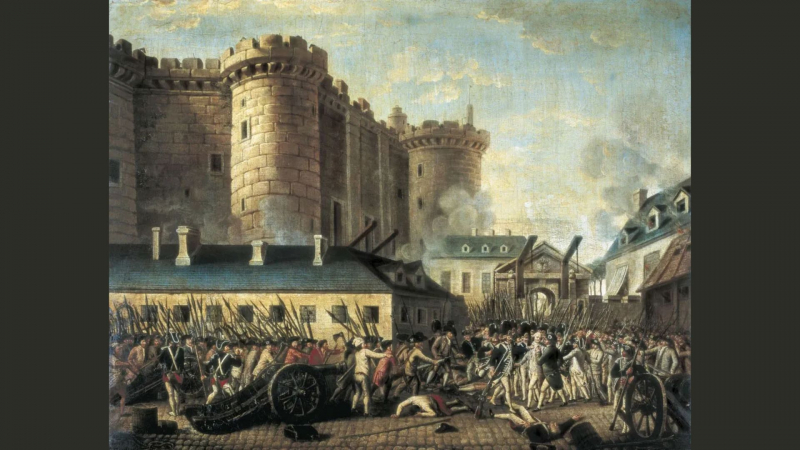
Encyclopedia Britannica -
Despite inheriting massive debts from his predecessor, Louis XVI and Marie Antoinette continued to spend lavishly, such as by assisting the American colonies in gaining independence from the British. By the late 1780s, France's government was on the verge of bankruptcy.
To make matters worse, widespread crop failures caused a nationwide famine in 1788. Bread prices soared to the point where, at their peak, the average worker spent nearly 88 percent of his earnings on just that one item.
Unemployment was also an issue, which the public blamed in part on newly reduced customs duties between France and the United Kingdom. Following a harsh winter, violent food riots erupted in bakeries, granaries, and other food storage facilities across France.
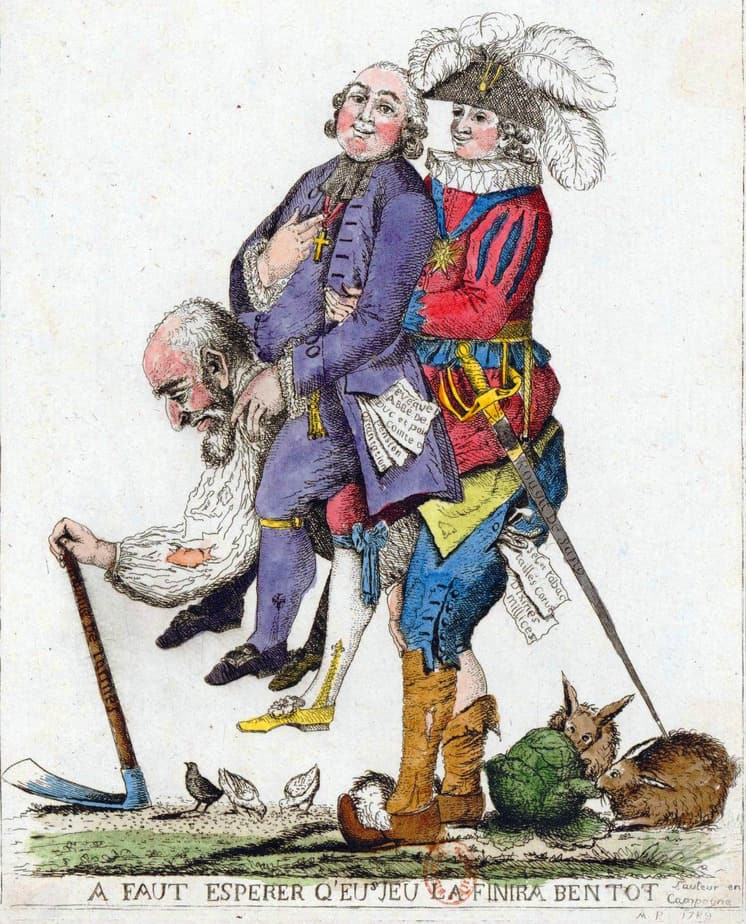
Discover Walks 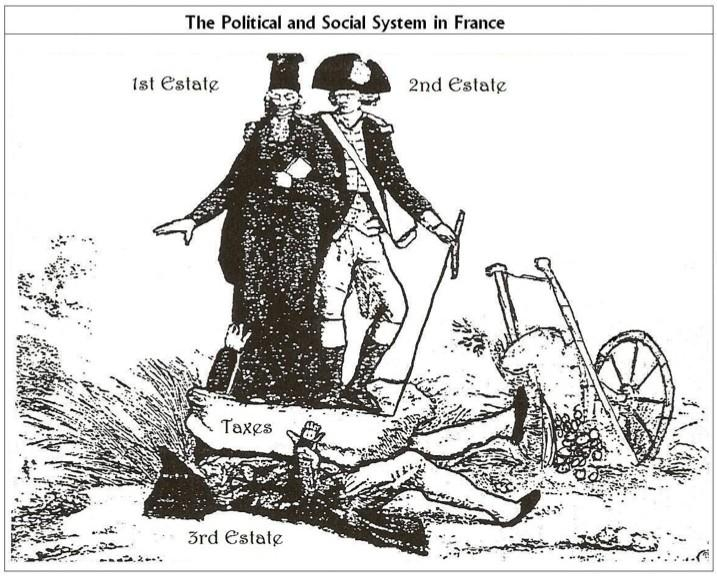
Causes of the French Revolution - Students of History -
In order to resolve the crisis, Louis XVI convened the long-dormant Estates-General, a national assembly divided into three orders based on social class: clergy (First Estate), nobility (Second Estate), and commoners (Third Estate).
Despite representing approximately 98 percent of the population, the Third Estate could be outvoted by its two counterparts. As a result of this disparity, its deputies immediately began clamoring for more power. After failing to make any progress, they declared themselves to be a new body called the National Assembly.
On June 20, 1789, they convened in a nearby indoor tennis court after discovering the doors to their meeting place locked. There, they swore an oath in defiance of the king to never part ways until creating a newly written constitution. This oath became known as the Tennis Court Oath.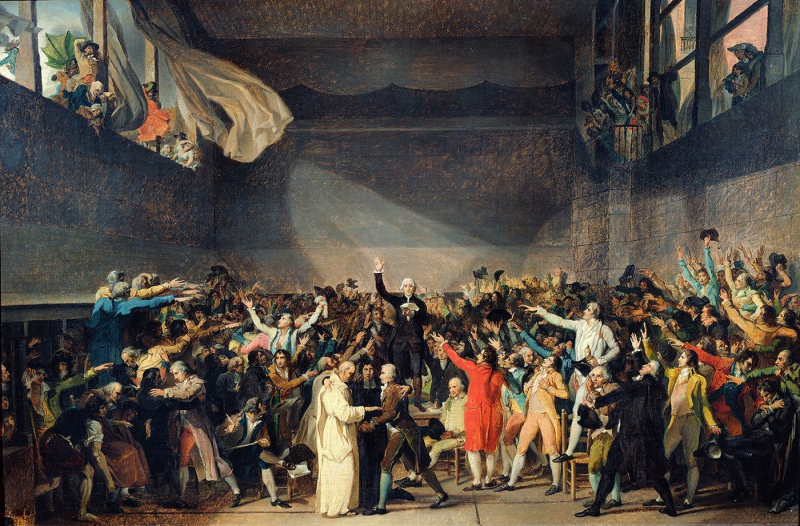
The Tennis Court Oath – 20th June 1789 - Mr Allsop History 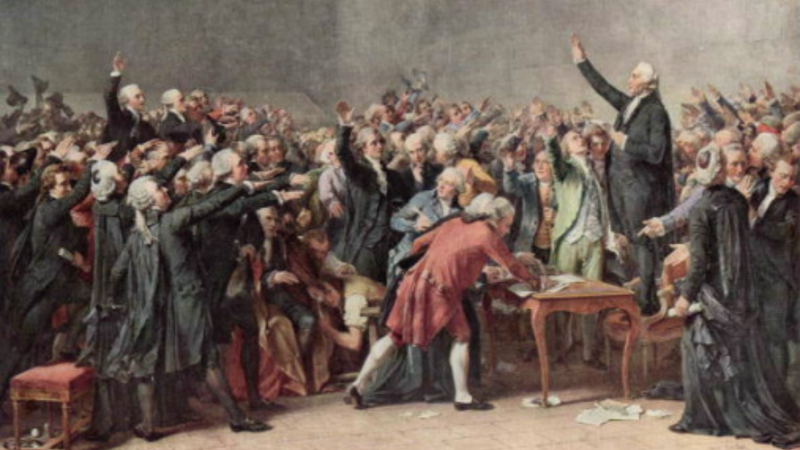
The Tennis Court Oath - The French Revolution -
Louis XVI reluctantly gave the National Assembly his approval after many nobles and clergymen joined it. However, he also sent several army regiments into Paris and the surrounding area, raising concerns that he would use force to disperse the gathering.
Then, on July 11, the king fired Jacques Necker, his sole non-noble minister, for being popular and reform-minded. The following day, protestors thronged Paris' streets and harassed royalist soldiers to the point where they evacuated the city. Crowds also set fire to the majority of Paris' despised customs stations, which levied taxes on goods, and started frantically looking for food and weapons.
On the morning of July 14, unrest increased when an unruly mob took possession of some 32,000 muskets and a few cannons from the Hôtel des Invalides (a military hospital) before focusing on the vast amount of gunpowder kept in the Bastille.
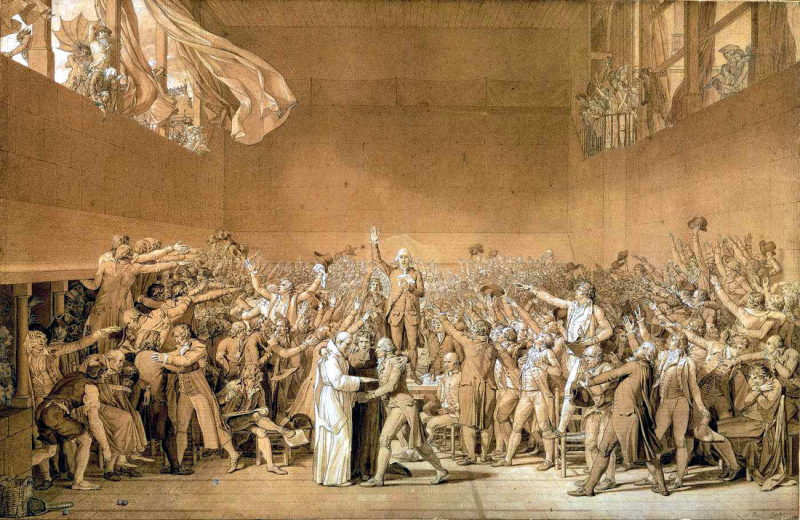
National Assembly of the French Revolution - HISTORY CRUNCH 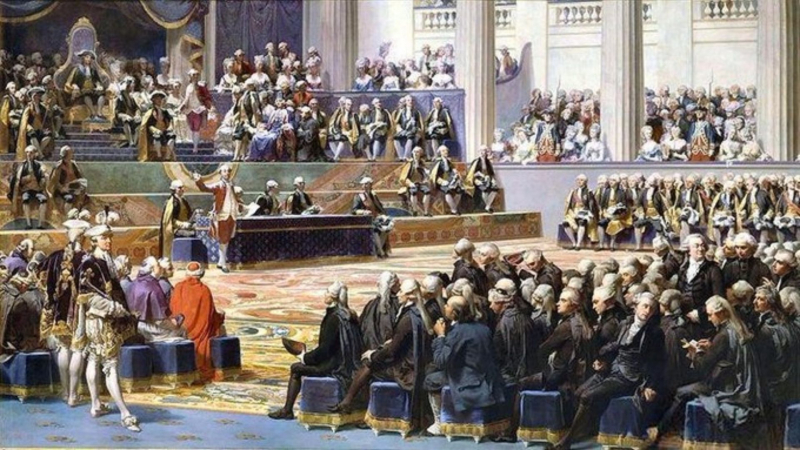
Course Hero -
On July 14, the Bastille's governor, Bernard-René de Launay, watched in dread as a sizable and expanding crowd of enraged revolutionaries surrounded the fortress. He invited representatives of the revolution inside to negotiate after receiving a demand to surrender.
He allegedly received them warmly and pledged not to open fire despite the lack of any direct orders from Louis XVI. However, as the discussions dragged on, the crowd outside became restless; some may have believed their delegates were being held captive.
Eventually, a group of men scaled an outer wall and lowered a drawbridge into the courtyard of the Bastille, allowing the crowd to swarm inside. De Launay broke his promise and ordered his soldiers to shoot when men attempted to lower a second drawbridge. The onslaught killed nearly 100 attackers and injured dozens more, while the royalists lost only one soldier.
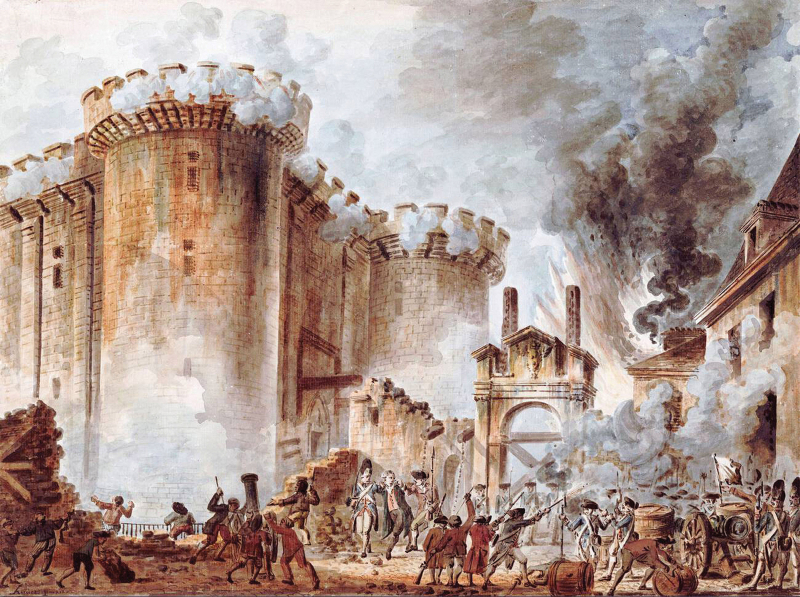
The Storming of the Bastille Led to Democracy but Not for Long - The National Endowment for the Humanities 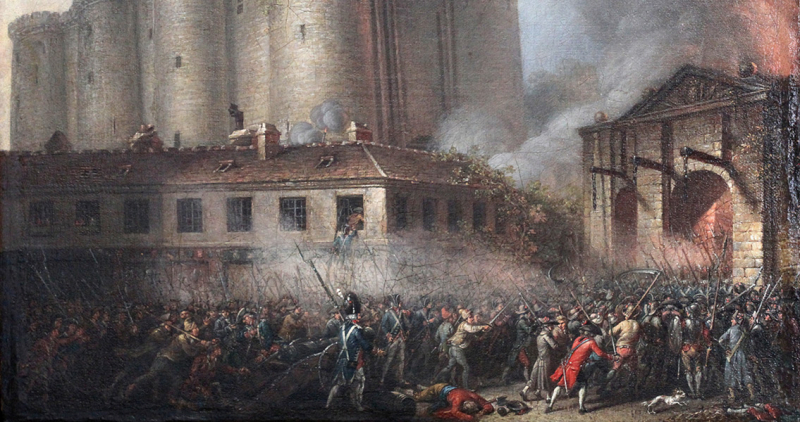
History Hit -
However, the tide turned later that afternoon when a detachment of mutinous French Guards arrived. The French Guards, who were permanently stationed in Paris, were known to be sympathetic to the revolutionaries. When they started firing cannons at the Bastille, de Launay, who didn't have enough provisions for a long siege, waved the white flag of surrender.
He was taken prisoner and marched to city hall, where a bloodthirsty mob separated him from his escort and murdered him before cutting off his head, mounting it on a pike, and parading it around the city. A few other royalist soldiers were also slaughtered, foreshadowing the horrifying bloodshed that would occur during and after the French Revolution.
Following the storming of the Bastille, the prison fortress was meticulously destroyed until virtually nothing was left. Louis XVI, who had been held as a de facto prisoner since October 1789, was executed on the guillotine a few years later, and Marie Antoinette was beheaded not long after.
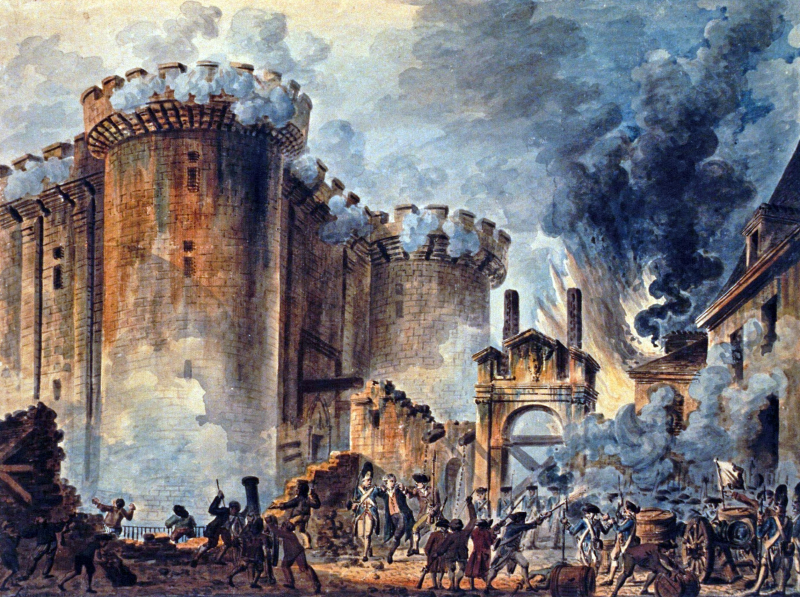
Fall of the Bastille - History On This Day 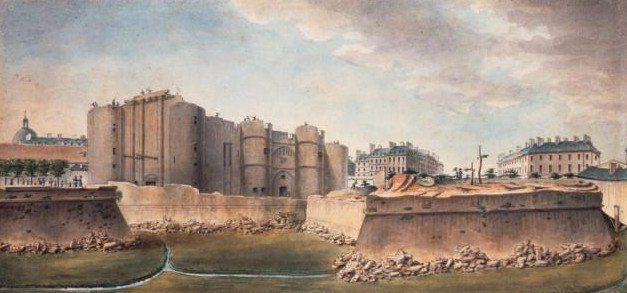
Finding Remains of the Bastille in Paris Today - Archaeology Travel -
Similar to how Americans celebrate the Fourth of July, Bastille Day, also known as la Fête nationale or le 14 juillet (14 July), is a national holiday in France that is marked by fireworks, parades, and parties.
The tricolor flag of France, the French proclamation Liberté, Egalité, Fraternité, and the singing of La Marseillaise are all well-known French symbols that originated during the euphoric years of the French Revolution.
Since Bastille Day in 1880, French troops have marched along the Champs-Elysées in Paris in front of French government officials and world leaders in one of the world's oldest annual military parades.
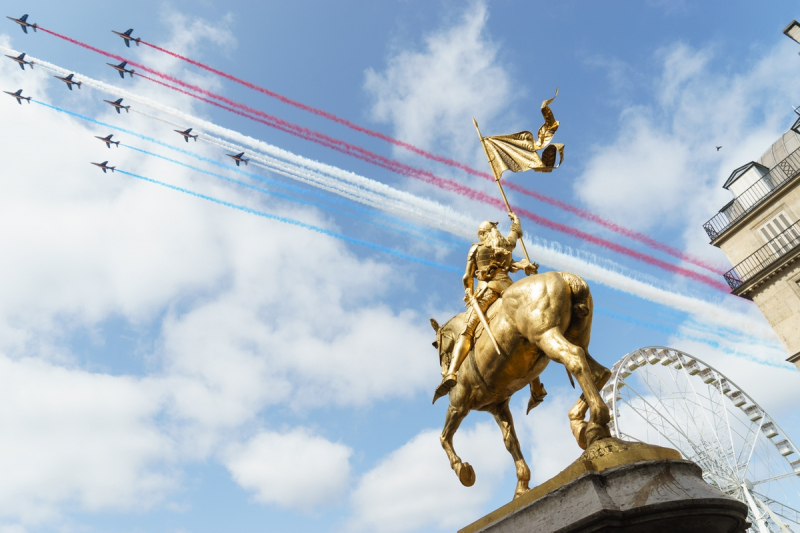
The Bastille Day military parade in Paris is sure to impress! - expatexplore.com 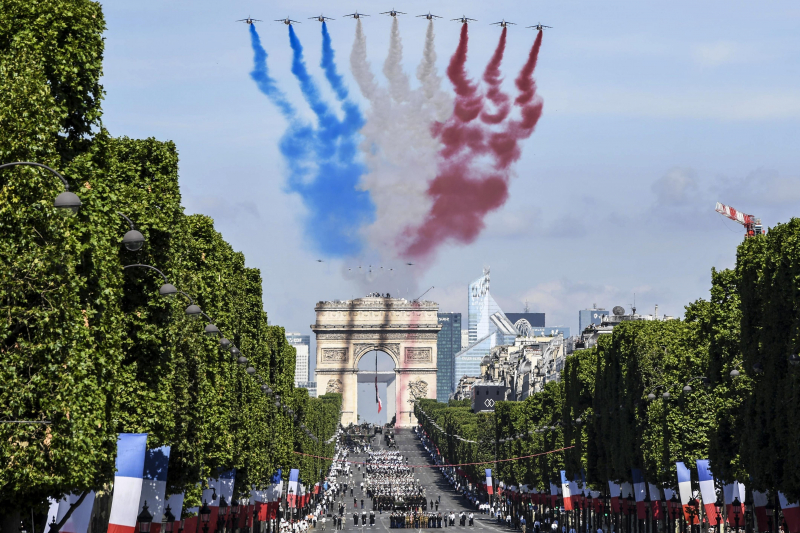
Wikipedia -
Bastille Day is a national holiday celebrated across the country with fireworks, parades, picnics, and parties.
Paris is the epicenter of Bastille Day festivities. The French capital is packed with revelers, and blue, white, and red tricolor flags flutter in the streets. The day's highlight is the Défilé Militaire du 14 Juillet (14 July military parade). French troops march down the Champs-Élysées in front of a large crowd, including the French president and other special guests, while military planes fly overhead. In the evening, there is a free fireworks display and a concert on the grounds of the Eiffel Tower!
You can participate in the festivities in a variety of ways. Watch the parade and marvel at the fireworks display (find a good vantage point in the city, such as Montparnasse Tower or the Sacré-Coeur, and arrive early!). You can even attend a ball at one of the city's fire stations (more on this below!).
You can also bring the French festivities into your own home this year! Make delicious French dishes, decorate in French colors, sing La Marseillaise (the French National Anthem), and dance the night away!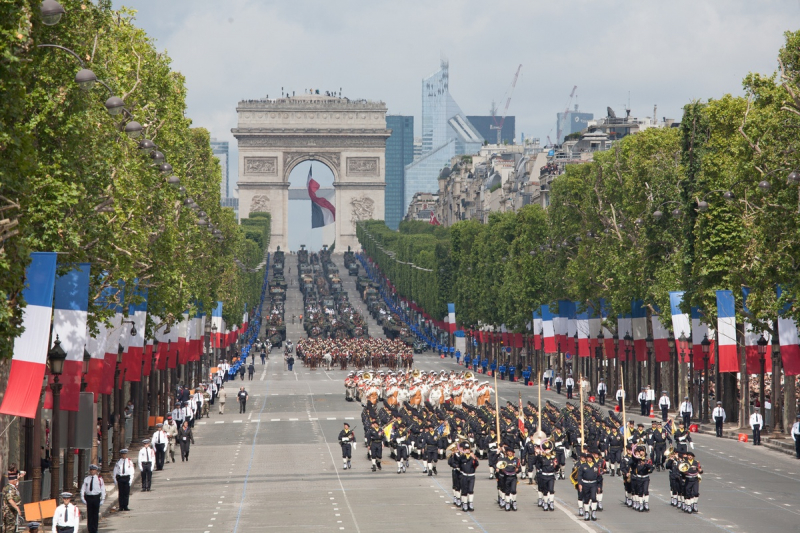
The military parade is a highlight of Bastille Day celebrations. - expatexplore.com 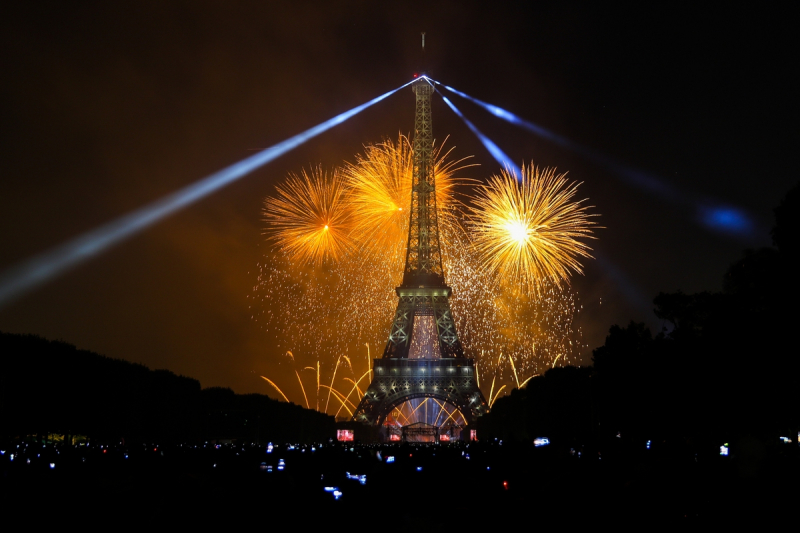
The celebratory fireworks in Paris are incredible to see! - expatexplore.com




















